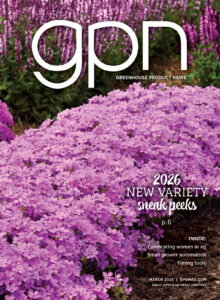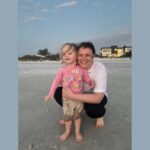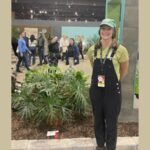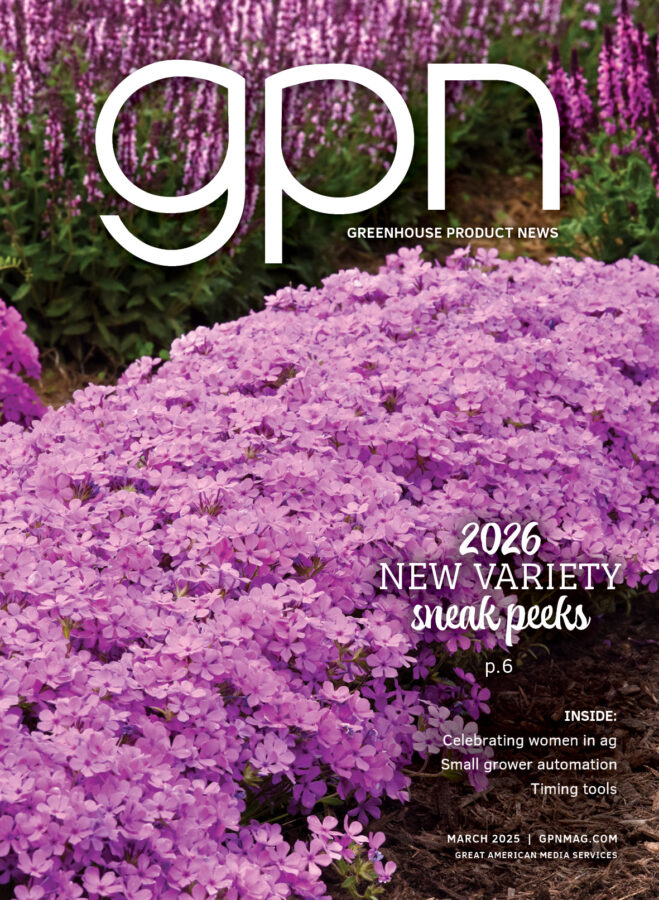Repelling Fungus Gnats with Dryer Sheets
Fungus gnats (Bradysia spp.) are common insect pests of greenhouse-grown crops. The adult flies (Figure 1, above) are considered a nuisance causing minimal direct plant damage; however, eggs laid by adult females hatch into larvae (Figure 2, page 64) that directly injure plants by feeding on the roots.
The primary means of dealing with fungus gnat populations in greenhouse production systems includes cultural management such as eliminating algae and avoiding over-watering, using insecticides, and/or by introducing biological control agents (e.g. predators and/or entomopathogenic nematodes). Another potential management strategy may be to use products or compounds with repellent activity, which could prevent adult females from laying eggs in growing media, thus reducing fungus gnat larval populations. Repellency is associated with any stimulus that elicits an avoidance reaction. Repellent products or compounds have been evaluated against insect pests, in particular, different species of biting mosquitoes. In addition, there are a number of plant-derived or similar compounds that have been tested to determine their repellent activity against mosquitoes.
For years, claims have been made that placing Bounce original brand fabric-softener dryer sheets into the pockets of clothing repels mosquitoes. Bounce original brand fabric softener dryer sheets (Procter and Gamble; Cincinnati, Ohio), which contain biodegradable cationic softeners and perfume, are added to dryers to control static cling and give clothes a fresh scent (www.bouncesheets.com/en.us/products/original/detail.jsp?section=scents&scent=outdoorfresh).
In fact, Bounce original brand fabric softener dryer sheets have been promoted to repel mosquitoes and "gnats" in some magazines; however, there is no quantitative data to substantiate such claims. Therefore, the objectives of this study were to 1) determine, under laboratory conditions, if Bounce original brand fabric softener dryer sheets repel fungus gnat (Bradysia sp. nr. coprophila) adults, and 2) determine the volatile constituents in the dryer sheets.
Materials and Methods
A series of four replicated experiments were conducted to determine whether Bounce fabric softener dryer sheets repel fungus gnat adults. The equipment and methodology used in the experiments involved the use of a set of five, six-armed experimental arenas consisting of a central compartment made from clear, round 5.3-liter polypropylene microwavable container, and six smaller compartments referred to as sample compartments, which were attached to the central compartment by plastic adjustable sleeves. Sample compartments were clear, square, 1-liter polycarbonate microwavable containers accompanied with snap-on lids. In the two-choice experiments, two sample compartments, positioned directly across from each other were used, with the sleeves associated with the remaining four sample compartments sealed-off with laboratory film.
There were a total of 10 petri dishes used for each experiment. A small piece (5×5 cm) of the dryer sheets was used in the experiments. The growing medium, SB300 Universal Professional Growing Mix was used in the designated experiments. Latex gloves were worn when handling the dryer sheets to ensure that no human body odors contaminated the dryer sheets thus influencing the results. The dryer sheets were positioned on the surface of the growing medium, and 20 mL of water was applied to the petri-dishes associated with experiments 1 and 4. We purchased new dryer sheets, which was used within two days of conducting each experiment.
The experiments performed in the study were: Experiment 1 (dryer sheet vs. water); Experiment 2 (dryer sheet vs. moist growing medium); Experiment 3 (dryer sheet and moist growing medium vs. moist growing medium); and Experiment 4 (dryer sheet and growing medium vs. dryer sheet and water). Adult fungus gnats used in all the experiments were six to nine days old. Approximately 150 fungus gnat adults were released into the central compartment of each experimental arena. Adults were aspirated into a 9-dram plastic vial. The vial was placed in the middle of the central compartment, the vial lid was removed, and then the central compartment lid was quickly sealed.
Fungus gnat adult distribution within the sample compartments was determined after 48 hours. The number of adult fungus gnats per yellow sticky card per treatment was recorded. Fungus gnat adults that were on the floor of each sample compartment, and determined to be dead, also were recorded. Any adult fungus gnats flying around within the compartment were collected with an aspirator and then the number was recorded. The number of adult fungus gnats, either live or dead, in the central compartment also was recorded. The volatile constituents of the dryer sheets were determined by gas chromatography analysis of the steam-distillation portion.
Results
Experiment 1: Dryer sheet vs. water. Treatment was significant (t-value=3.93; df=9, 17.7; P=0.0010) with a higher proportion of fungus gnat adults present in the sample compartments containing water (42 percent) compared to those with the dryer sheets (16 percent) (Figure 4).
Experiment 2: Dryer sheet vs. moist growing medium – SB300 Universal Professional Growing Mix. Treatment was significant (t-value=7.70; df=9, 16.4; P²0.001) with a higher proportion of fungus gnat adults present in the sample compartments containing the moist growing medium or MOIST GM (48 percent) compared to the dryer sheet (12 percent) (Figure 5).
Experiment 3: Dryer sheet and moist growing medium vs. moist growing medium. Treatment was significant (t-value=6.09; df=9, 15.2; P²0.001) with a higher proportion of fungus gnat adults present in the sample compartments containing only moist growing medium or MOIST GM (45 percent) compared to sample compartments with a dryer sheet (DS) and moist growing medium or MOIST GM (18 percent) (Figure 6).
Experiment 4: Dryer sheet and growing medium vs. dryer sheet and water. Treatment was not significant (t-value=0.22, df=9, 16.2; P=0.8271) with an equal proportion of fungus gnat adults present in the sample compartments containing a dryer sheet and growing medium or DS + MGM (15 percent) as the sample compartments with a dryer sheet and water or DS + WATER (15 percent) (Figure 7).
Steam distillation extraction experiment. Analysis of the volatile constituents of the dryer sheets by gas chromatography-mass spectrometry identified the following components: linalool, benzyl acetate, beta-citronellol, and hedione (Figure 8).
Discussion
This study is the first to demonstrate that Bounce dryer sheets repel fungus gnat adults under laboratory conditions. For all four experiments, the mean proportion of fungus gnat adults collected in the sample compartments containing the dryer sheets were significantly fewer ranging from 12 to 18 percent whereas those sample compartments without dryer sheets contained 33 to 48 percent of the fungus gnats released in the arena. Furthermore, for experiments 1 through 3, the percent of fungus gnat adults recovered from the central compartment was between 36 and 48 percent; however, the percent of fungus gnats collected from the sample compartments for experiment 4, which included dryer sheets in both sample compartments, was 69 percent. This suggests that for experiment 4, fungus gnat adults remained in the central compartment, further validating evidence for repellent activity of the dryer sheets when placed in both sample compartments.
Fungus gnat adults are highly attracted to moist growing medium; however, dryer sheet repellency, as demonstrated in experiments three and four, clearly overcame any attraction to the moist growing medium. One of the major volatile constituents detected in the dryer sheets was linalool — a monoterpene alcohol, colorless liquid used by cosmetic and perfume companies due to its flower-like odor. Linalool is present naturally in plants including lavender (Lavandula angustifolia), marjoram (Origanum vulgare) and basil (Ocimum basilicum).
Linalool has been shown to be directly toxic to a number of different mite and insect pests. However, minimal research has been conducted to evaluate any repellent activity. It is interesting to note that the citrosa plant (Pelargonium citrosum 'Van Leenii'), which is extensively promoted due to claims of repelling mosquitoes, contains approximately 6.8 percent linalool.
Citronellol is another monoterpene found in many plants including rose geranium (Pelargonium graveolens), citronella (Cymbopogon nardus), European pennyroyal (Mentha pulegium) and lemon balm (Melissa officinalis). Citronellol is used in sweet lemon scent perfumes and has demonstrated repellent activity against mosquitoes although the duration of repellency is less than one hour.
Conclusions
Based on the results obtained from our study, it is evident that Bounce original brand fabric softener dryer sheets repel fungus gnats. However, there are still important issues that need to be resolved including the residual effects (based on age of dryer sheets) and distance of effective repellency, response in a no-choice situation (if dryer sheets are placed into each petri-dish), impact on fungus gnat larval populations and ultimately plant damage. As such, the use of dryer sheets may be an alternative strategy to deal with fungus gnat populations in greenhouses. This may involve placing individual dryer sheets into a designated number of containers with plants (Figure 3, page 64), which would repel adults and prevent egg-laying by females thus reducing larval populations.









 Video Library
Video Library 


















